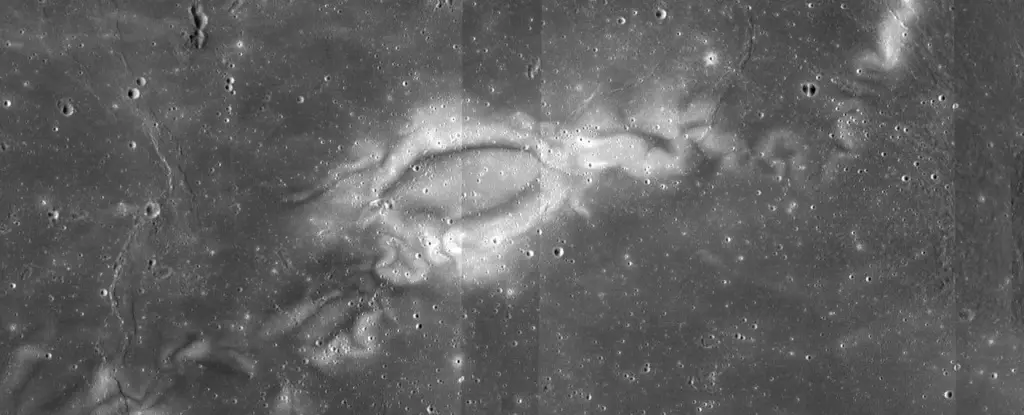The Moon, with its distinct lack of atmosphere and tectonic plates, presents a unique environment vastly different from Earth. However, this alien world still holds its share of peculiarities, as recent discoveries have shown. Scientists have stumbled upon some enigmatic dust-covered boulders within the Reiner Gamma lunar swirl, an area already known for its unusual characteristics. These reflective boulders, initially mistaken for craters, have piqued the curiosity of researchers, as they possess properties uncommon to typical lunar rocks.
Lunar swirls like Reiner Gamma have fascinated scientists for years. These conspicuous features are believed to originate from pockets of magnetized rock that deflect solar wind particles. The interaction between these magnetized materials and the solar wind creates swirls that are visible even from Earth. However, alternative theories propose that the swirls may have formed due to interactions between magnetic anomalies in the lunar crust and electrically charged fine dust particles launched by micrometeorite impacts. Another possibility is that both the swirls and magnetic fields resulted from plumes of material ejected by comet impacts.
By meticulously analyzing approximately one million images of fractured rocks taken by NASA’s Lunar Reconnaissance Orbiter, a team of scientists led by planetary scientist Ottaviano Rüsch from the University of Münster in Germany made an intriguing discovery. Among the images, they observed a single rock with unique reflective properties that deviated from the norm. This rock scattered less light back towards the sun compared to others, sparking the scientists’ curiosity. Subsequent investigations aimed to identify other dusty boulders with similar properties, employing artificial intelligence to sort and analyze the images based on size and reflectance. The algorithm generated approximately 130,000 potential candidates, half of which were scrutinized.
The scientists found that the less reflective rocks were concentrated near the Reiner Gamma magnetic anomaly, suggesting a correlation between these enigmatic properties and the peculiar magnetic region. However, not all rocks within the Reiner K crater exhibited these odd reflectance characteristics. This observation led the researchers to posit that a thin layer of dust may have accumulated on some, but not all, of the boulders, accounting for their distinctive properties. The exact nature of this dust, including density, size, and structure, remains unclear and requires further investigation.
Armed with their findings, the team intends to delve deeper into understanding the processes behind the formation of lunar swirls. They envision investigating mechanisms such as the lifting of dust due to electrostatic forces or the interaction between the solar wind and patches of magnetism on the lunar surface. In parallel, NASA and researchers at the Johns Hopkins Applied Physics Laboratory are preparing to launch a lunar lander in 2024. This mission aims to explore Reiner Gamma on the ground, closely examining its magnetic anomalies and providing more clues to unravel the mysteries of the lunar swirls.
The discovery of these reflective dust-covered boulders within the Reiner Gamma lunar swirl is an exciting development in lunar research. This finding challenges existing theories and requires a reassessment of our understanding of lunar surface dynamics. As scientists continue to unravel the mysteries of the Moon, we come one step closer to understanding our celestial neighbor and the secrets it holds.


Leave a Reply